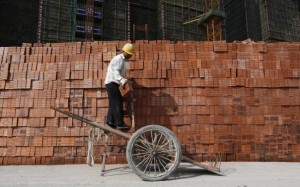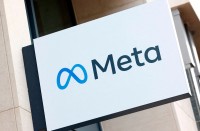
(Reuters) – China’s economy grew at its slowest pace in 18 months at the start of 2014, but did a touch better than expected and showed some improvement in March, suggesting Beijing will not rush to follow up recent steps to support activity.
Authorities have ruled out major stimulus to fight short-term dips in growth, signaling the slowdown was an expected consequence of their reform drive, even as some analysts think the economy will lose further momentum.
The economy grew 7.4 percent in the January-March quarter from a year earlier, the National Bureau of Statistics said on Wednesday. That was slightly stronger than the median forecast of 7.3 percent in a Reuters poll but still slower than 7.7 percent in the final quarter of 2013.
It was China’s slowest annual growth since the third quarter of 2012, when the world’s second-largest economy also grew 7.4 percent.
“The slowdown of China’s economy is a reflection of a transformation of the economic mode,” said Sheng Laiyun, of the National Bureau of Statistics.
“There is no fundamental change in the improving trend of China’s economy. The economy is still moving steadily towards the expected direction.”
For the quarter, the economy grew 1.4 percent, the slowest rate in two years, which Credit Agricole strategist Dariusz Kowalczyk said equated to annualized growth of 5.8 percent.
“This highlights the depth of deceleration at the start of the year,” he said.
Beijing has announced some modest measures, such as tax cuts for small firms and speeding up investment in railways, to try to steady growth near its target of 7.5 percent without disrupting plans to restructure the economy or worsening problems of overcapacity and debt.
“Policymakers seem pretty comfortable with the current pace of growth,” said Julian Evans-Pritchard, an economist at Capital Economics in Singapore. “I don’t think they’re going to announce any further significant measures to support growth.”
Activity data for March, released with the GDP figures, showed that China may be making some headway in its attempt to enhance the role of consumption and cut its reliance on traditional growth engines of exports and investment.
Retail sales were a shade ahead of forecasts with an annual increase of 12.2 percent, while factory output came in just below expectations with a rise of 8.8 percent.
“That sector is continuing to moderate and now there is an even bigger gap between industrial production and retail sales. So the rotation from relying on heavy industries towards consumption is certainly coming to fruition,” Annette Beacher, head of Asia-Pacific research at TDSecurities in Singapore said.
Cumulative fixed-asset investment in the first three months of the year was 17.6 percent higher than a year earlier, again on the low side of forecasts.
SERVICES IMPORTANT
The services sector, which includes retail, made up 49 percent of gross domestic product in the first quarter, 4.1 percentage points more than the industrial sector.
Growth in retail bodes well for employment, a top government priority, as services are now the biggest employer in China.
“The resilience of the relatively labor-intensive services sector has helped the labor market hold up reasonably well in the first quarter, even though it cooled,” Louis Kuijs, RBS economist in Hong Kong, said in a note.
Previously released figures for March had raised concerns that economy was losing more momentum than expected, and even though first-quarter GDP was slightly better than forecast, those worries remained.
Exports fell for the second month in a row and imports dropped sharply in March, while money supply grew at its slowest annual pace in more than a decade. Official and private surveys also show the manufacturing sector continuing to struggle.
Stephen Green, an economist with Standard Chartered in Hong Kong, expects a 50 basis point cut on the reserve requirement ratio banks in coming months, a move that would free up more funds in the economy.
“It’s not bad enough to change monetary policy, but forward indicators suggest that in the next few months we will see more aggressive easing,” Green said








